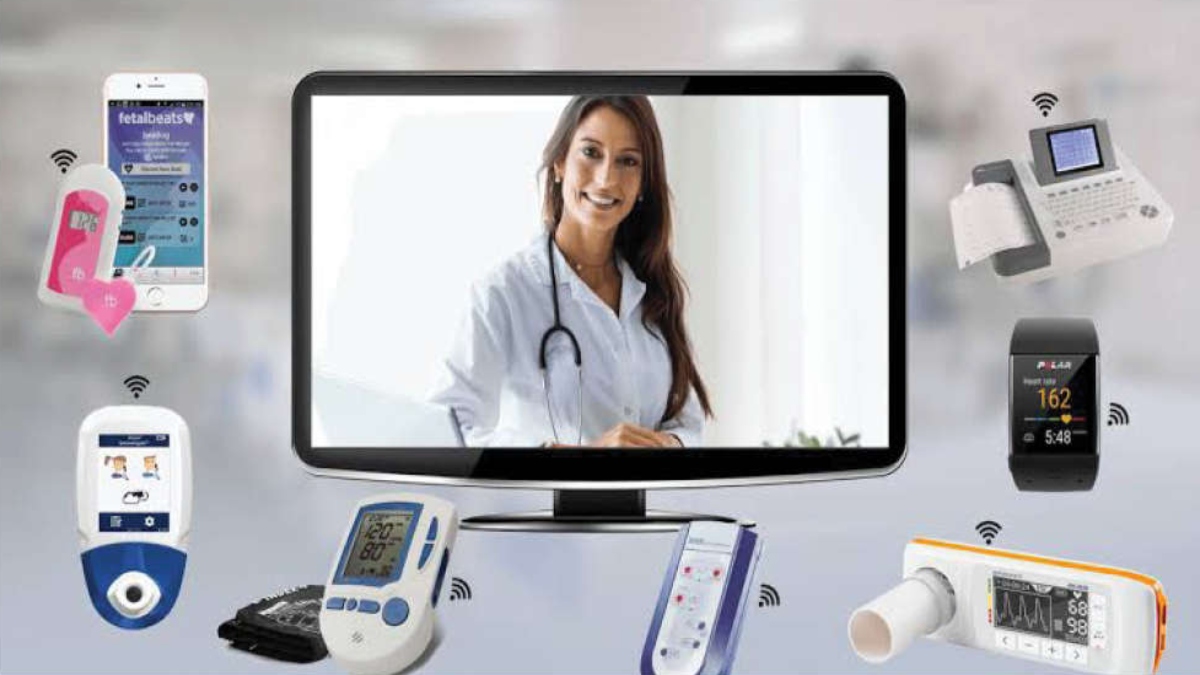The novel coronavirus pandemic has pushed the healthcare system on the path of some major transformations, changing the way care is delivered. Remote patient monitoring (RPM) is one such change narrowing the gaps in care delivery within the healthcare system. As per Research and Markets, the global remote patient monitoring systems market is projected to cross US$1.7 billion by 2027, up nearly 128 per cent from the opportunities currently presented by the market.
 RPM systems are transforming care and treatment for patients with chronic diseases.
RPM systems are transforming care and treatment for patients with chronic diseases. Patient interacting with doctor
Patient interacting with doctor
RPM systems are transforming care and treatment for patients with chronic diseases like heart rhythm disturbances, hypertension and diabetes by providing superior care outcomes and reducing cost. In the face of adversity such as economic downturns, pandemics and other disasters, remote monitoring becomes crucial to link patients in need with providers. Several studies have also indicated the vital role played by RPM systems during the present pandemic of Covid-19.
WHAT IS REMOTE PATIENT MONITORING?
Remote patient monitoring is the use of a digital device for interaction between patients and providers outside of the provider’s clinic or organisation. It can be defined as connected care that allows patients to stay connected with their doctor without the need to physically travel. The common examples of RPM devices are blood glucose monitors, weight scales, spirometers and blood pressure monitors among others. After the device has been set up properly, health data captured by the device is transmitted from the patient to the provider electronically. The doctor analyses the data and provides the patient health and wellness directions and guidance based upon the results.
HOW REMOTE PATIENT MONITORING CAN BE USEFUL
While the healthcare system in the country has made significant strides over the past few years, there are certain infrastructure challenges like a high patient-to-bed ratio (5 beds per 10000 people) and caregiving, widening the gulf between patients and providers. This gap further entails numerous challenges as far as traditional patient care is concerned like – a delay in response time, error-prone staff checking several times on patients that leads to process redundancy and the possibility of missing out on critical signs. That’s where RPM systems can make a difference. Here are some of the benefits of RPM:
IMPROVED QUALITY
When caregivers are more directly involved with relevant patient data through RPM, patient care is enhanced with a streamlined operating procedure. Even better, it improves patient behaviour by establishing a system where that fosters greater engagement and accountability and allows patients to take control of their health.
BETTER ACCESS TO FACILITIES AND HEALTHCARE KNOWLEDGE
With the rapid increase in lifestyle diseases, remote patient monitoring enhances the capacity for care providers to treat more patients, who in turn are now increasingly conscious of the standard caregiving processes and more responsive to the same.
ACCURATE DATA DRIVEN INSIGHTS AND FEEDBACK
RPM systems not only collect data but automatically provide the information back to the patients. This expands the levels of support, education and feedback to the patients. RPM programs allow a patient to get daily health information, daily support, daily help and all that can make a difference in the world in terms of health outcomes.
THE ASSURANCE OF BEING UNDER CONSTANT MONITORING
The benefits of RPM systems go beyond the boundaries of extending care. It provides invaluable assurance to patients that they are under constant monitoring and someone’s there to watch out for their well-being and health.
Technological advancements in the healthcare sector are transforming the relationship between healthcare providers and patients as well as the health system. With innovative technologies, providers can improve treatments based on round-the-clock data in real-time. This information is assisting healthcare providers to come up with an immediate plan of action, predicting trends and addressing issues proactively. Now, the time has come when the patient should go to hospital only for a procedure, care should be provided at a step down setup including home. The future of the Indian healthcare system depends to a large extent on the adoption of technological tools and systems that can bring changes in the delivery of care every step of the way for patients.
The writer is CEO of Apollo Telehealth.























